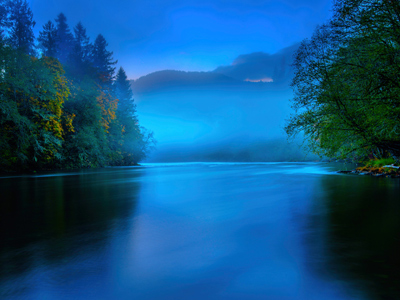
River Movement and Erosion
Rivers are an important part of the landscape, eroding, transporting and depositing materials of many different sizes. For the GCSE, you need to demonstrate that you understand how rivers work and the effects that they have on the landscape. This quiz is concerned only with river movement and erosion.
Rivers move because water flows downhill. They start in higher areas and flow to the lowest point that they can reach. For most rivers, this is a sea or an ocean. Some flow into depressions that are either lower than sea level or cut off from the oceans by higher land. An example of this is the world's largest lake - the Caspian Sea. This has no rivers flowing out from it, water seeps out into the underlying rocks or evaporates. If you want to find out more about these, look up 'Endorheic basin'.
Ready for more?
not all...
quizzers. Try to win a coveted spot on our Hall of Fame Page.







